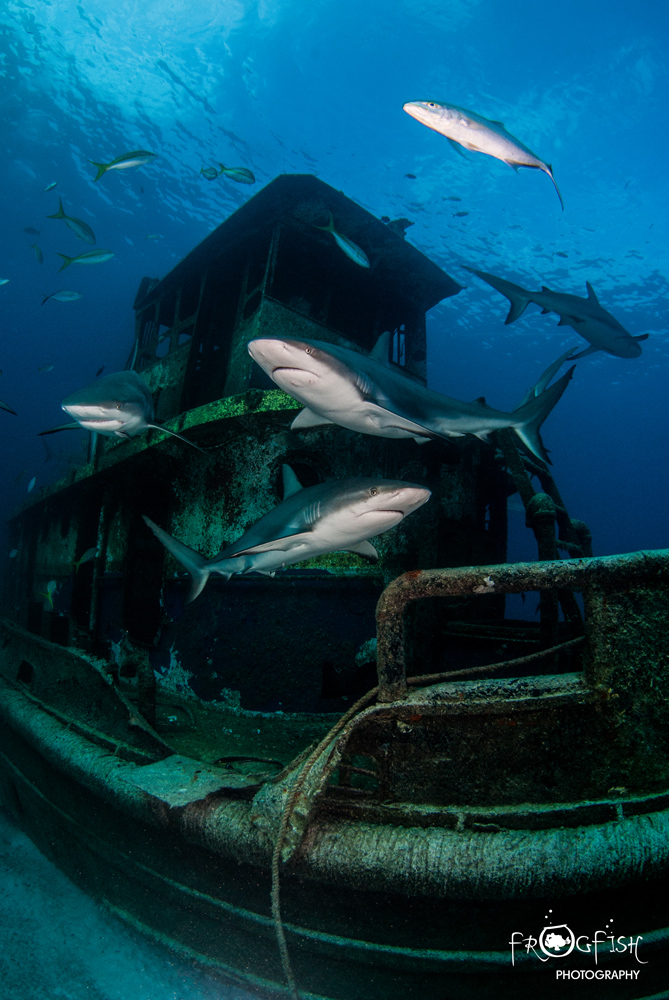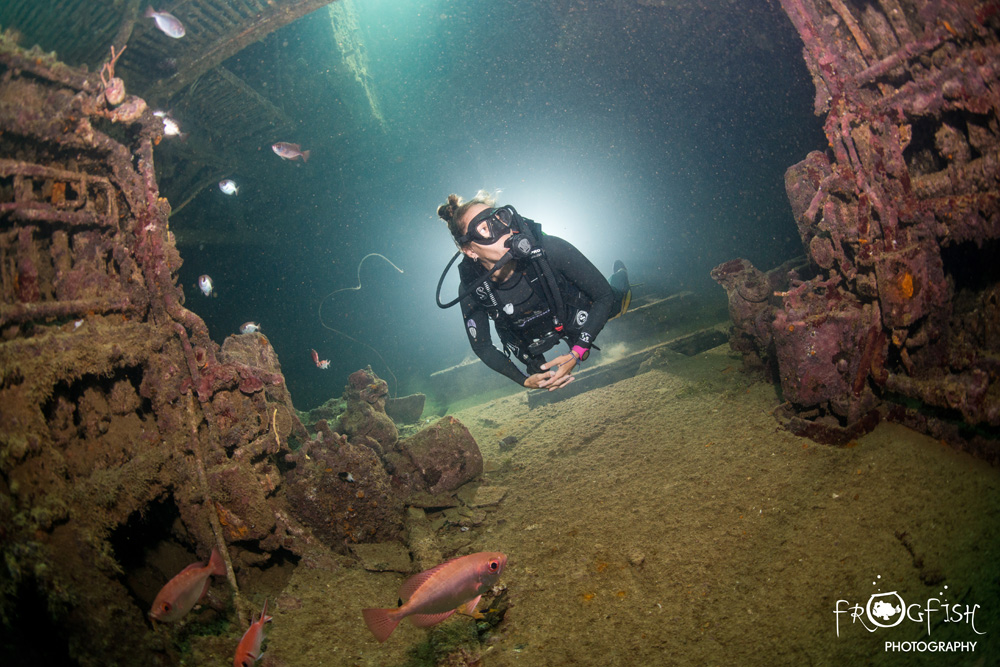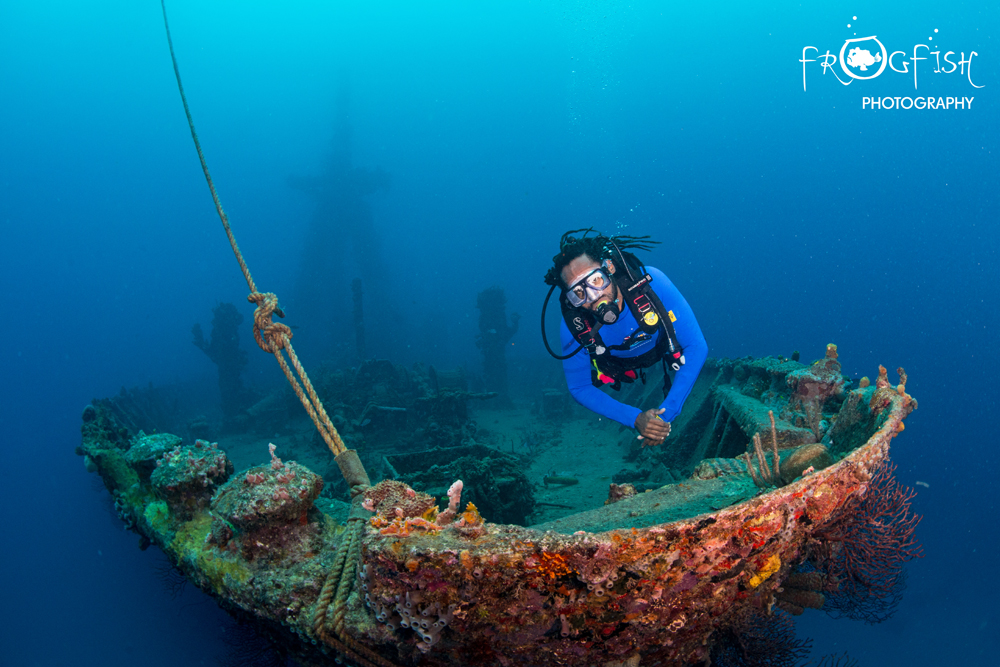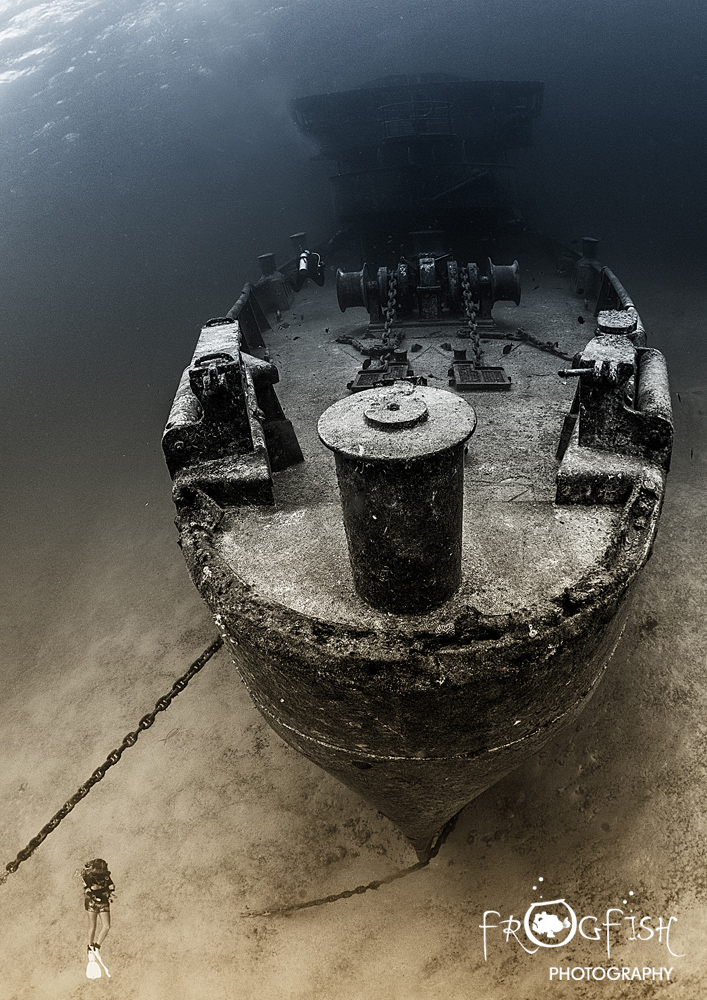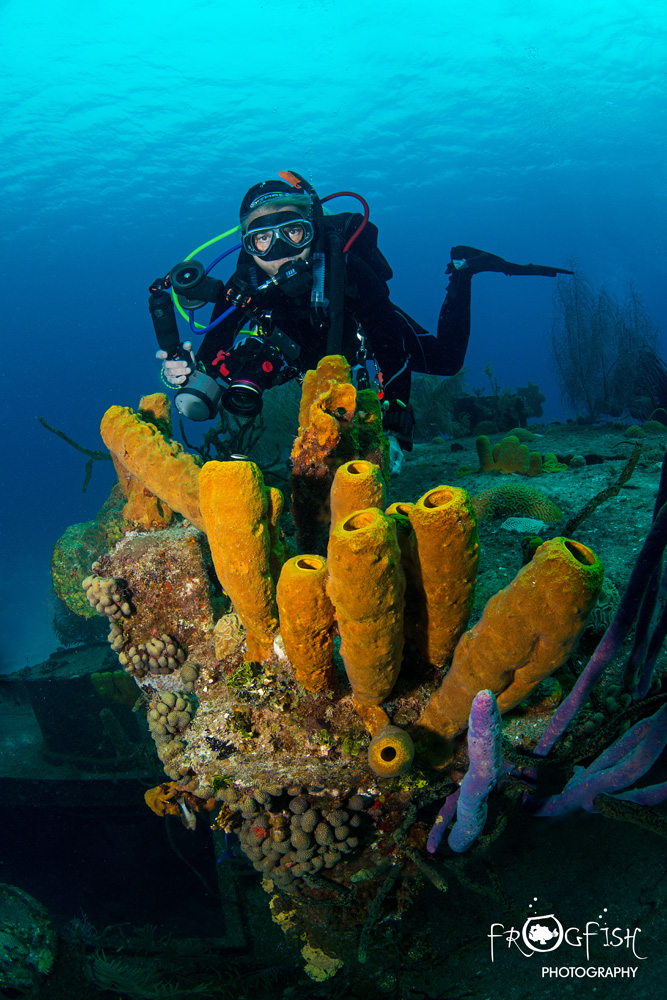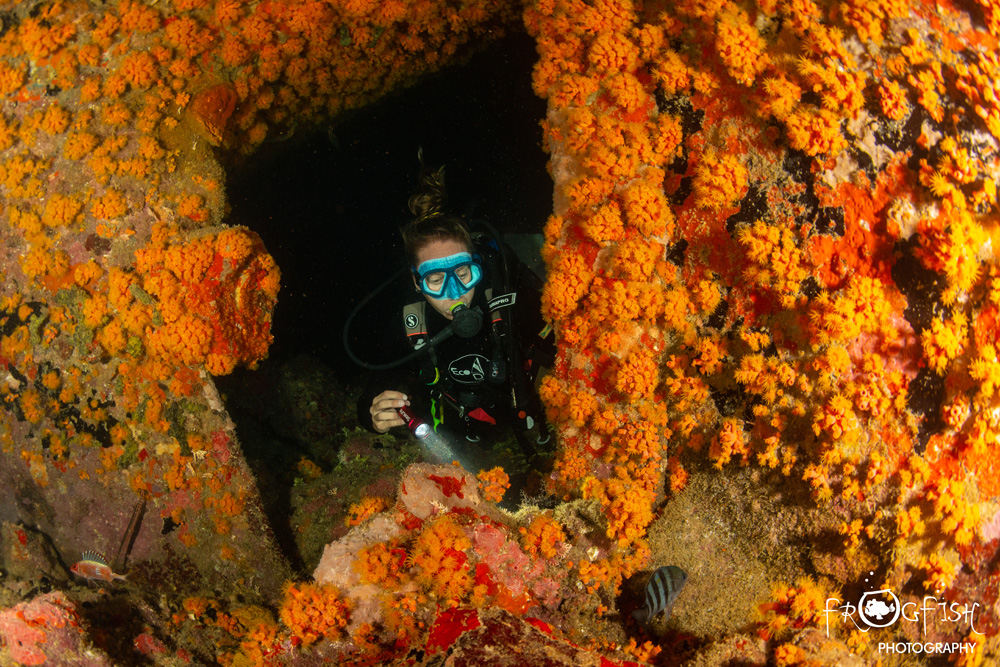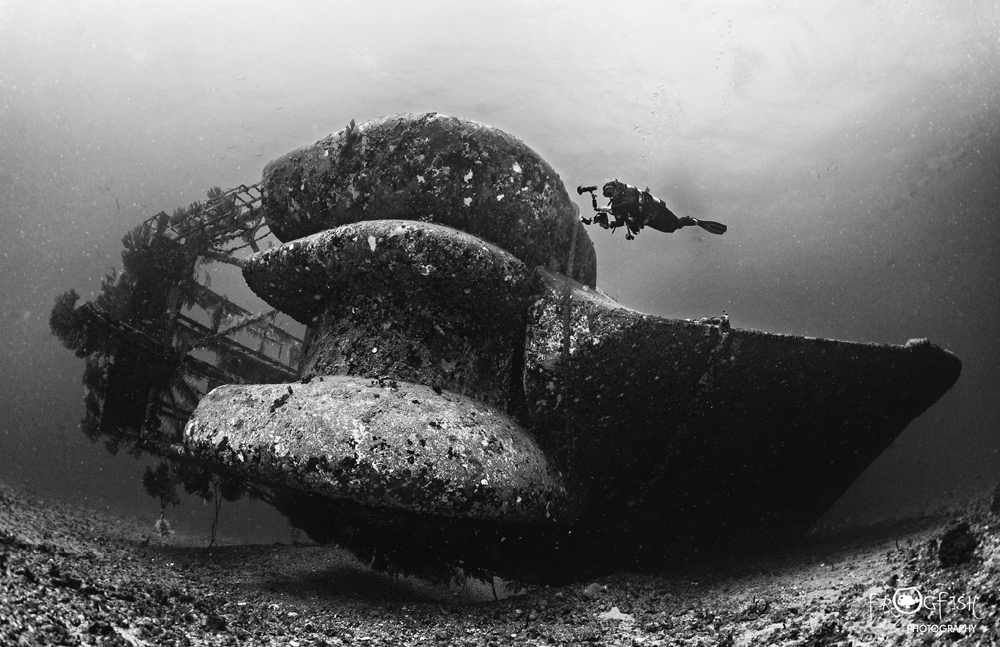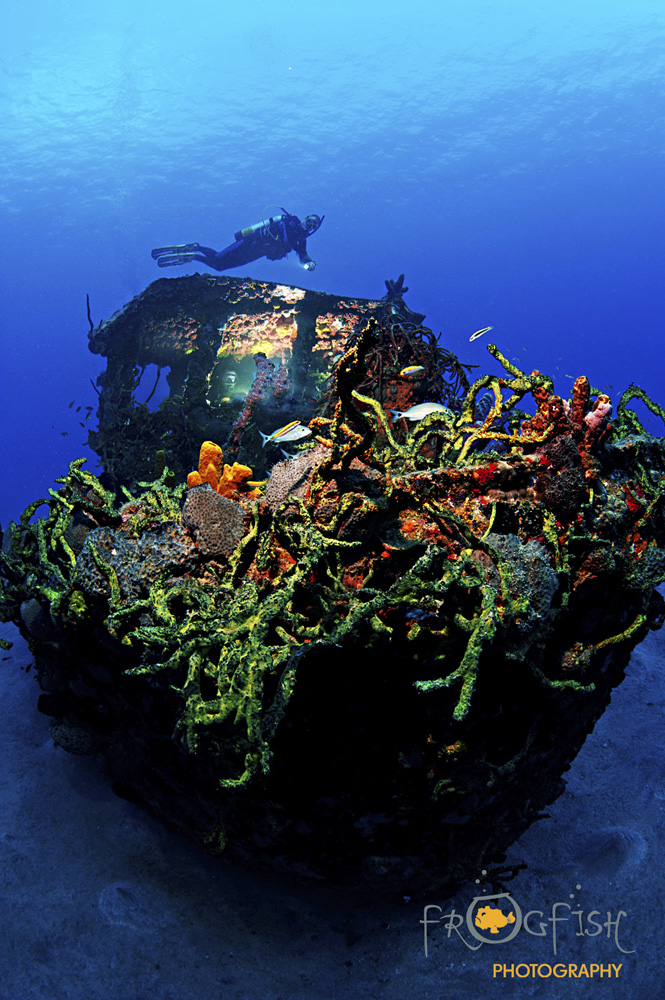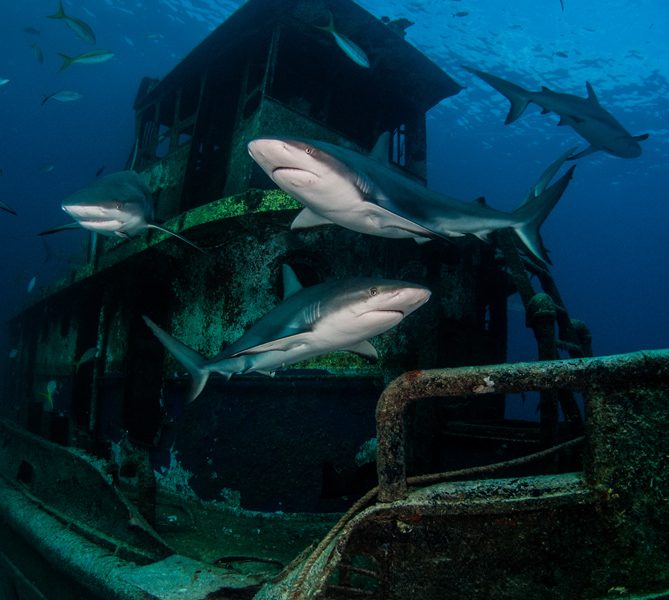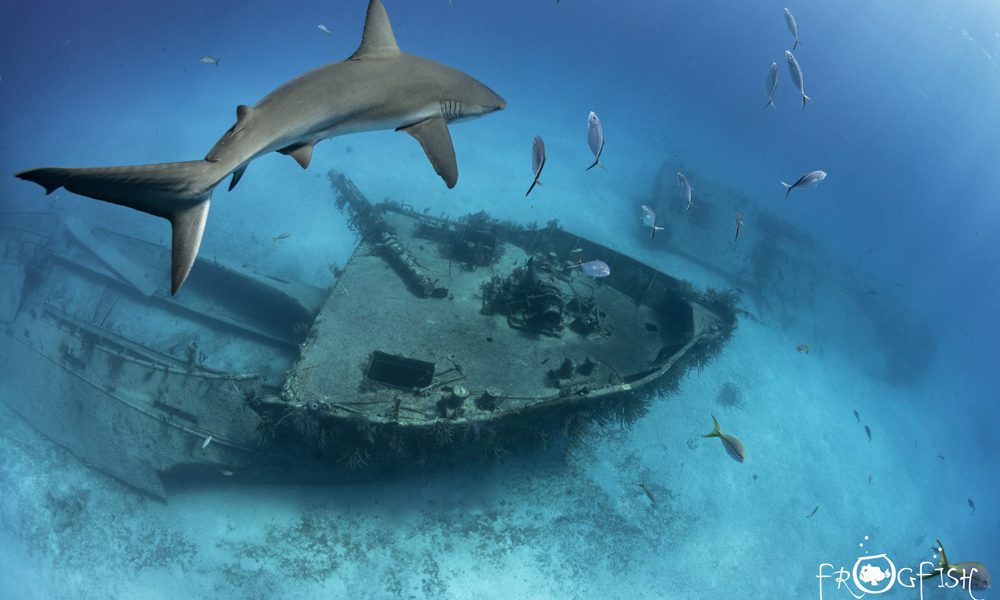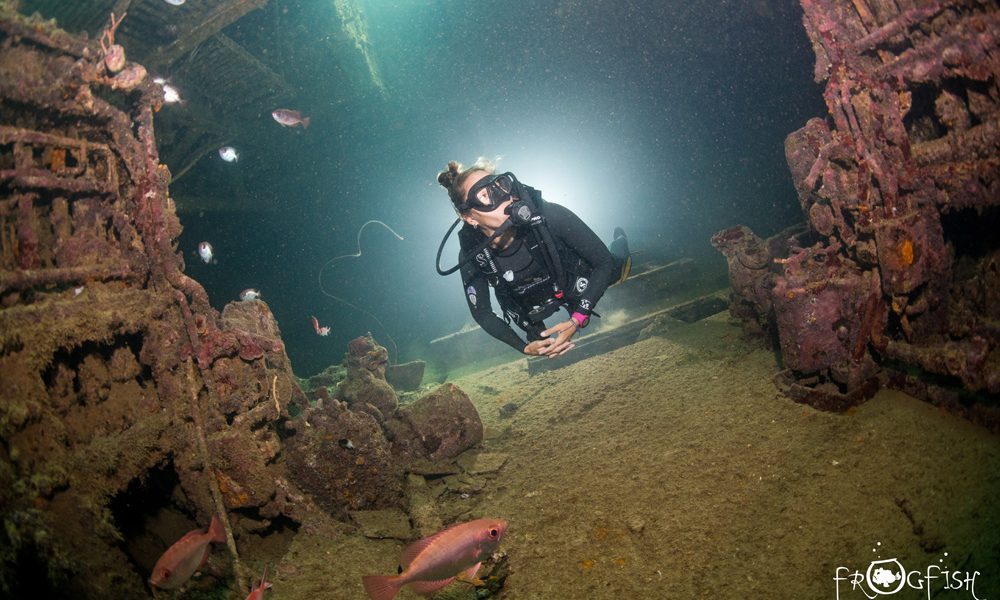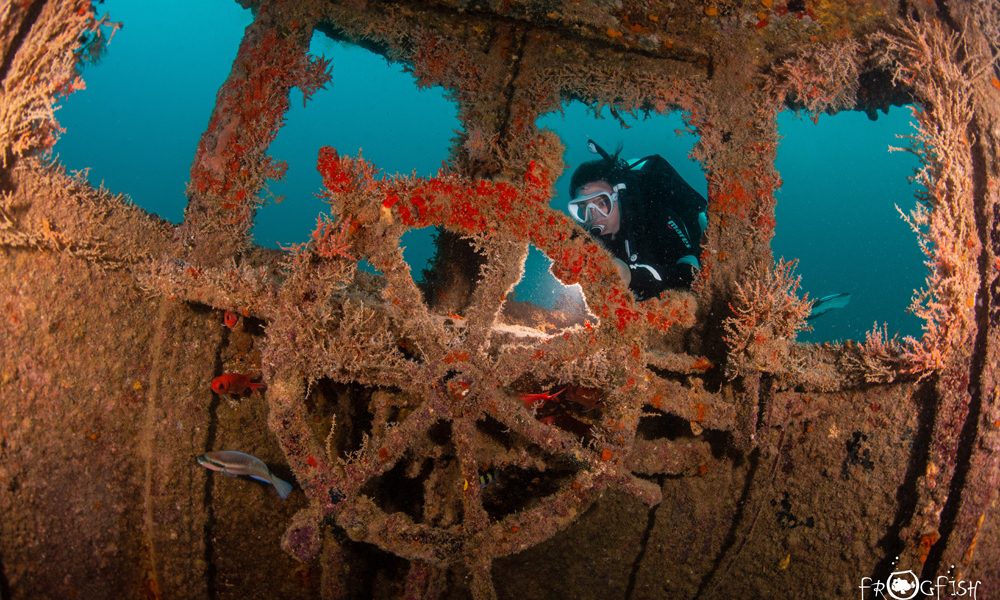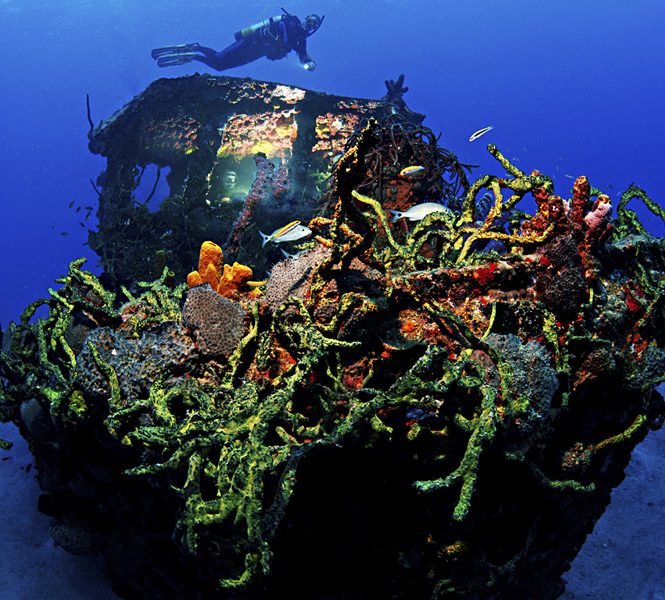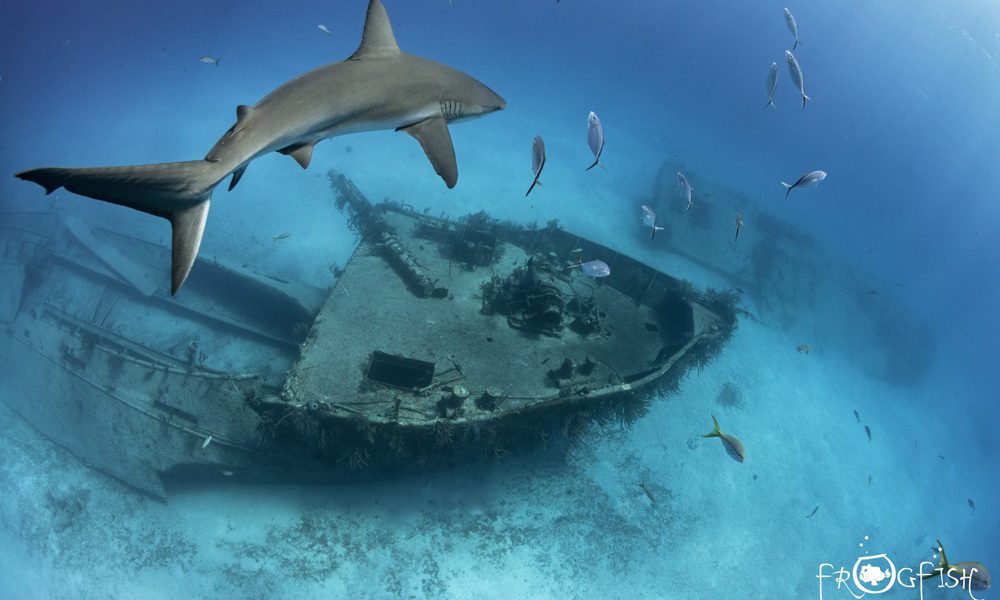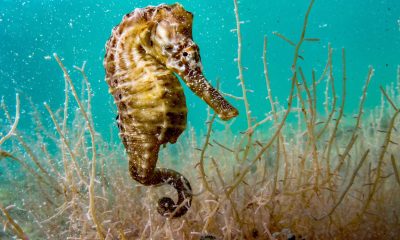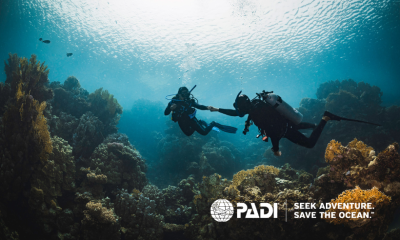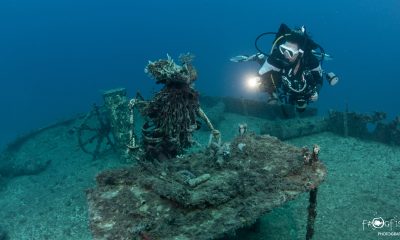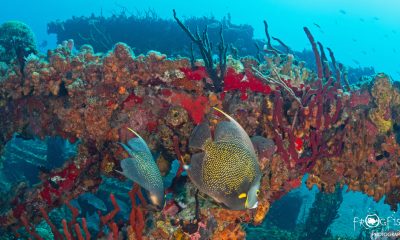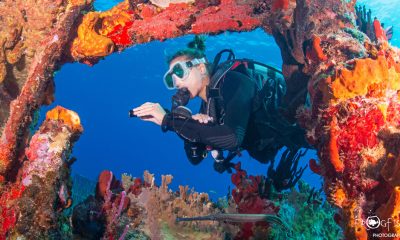Blogs
Top 5 Caribbean Wreck Diving Destinations

Love wreck diving? Love diving in clear blue warm water? Then here are our top 5 wreck diving destinations in the Caribbean.
The Bahamas
Want to combine some wreck diving with seeing sharks up close? Then The Bahamas is the destination for you. The islands have both ancient and modern ship wrecks to explore on most of the islands. Some sunk for filming movies, some sunk to make artificial reefs, even a crashed plane in water shallow enough to snorkel.
- Big Crab
- Caribbean Reef Shark on the wreck of the Ray of Hope
Stuart Cove’s Dive Bahamas offer shark dives on two different wrecks that offer underwater photographers & divers to enjoy the best of both shark diving and wreck diving (and you can even do this at night!).
Still on our Bahamian Wreck Diving wish list is the SS Sapona off Bimini – a large wreck that lies part submerged which offers some amazing split-shot opportunities.
Barbados
The island of Barbados is popular with divers and snorkelers alike. Amazing beaches, great food and a friendly welcome are what you should expect. But it is below the waves that makes this island stand out from the crowd. Probably the most famous wreck of Barbados is the Stavronikita, a huge and fairly deep wreck that takes several dives to fully explore. Its structure is now covered in coral growth and plenty of marine life has made this artificial reef its home.
- Inside the Bajan Queen
- Diver on the Stavronikita
But our favourite wreck diving location on the island has to be Carlisle Bay, where several wreck have been sunk in a rough circle for both divers and snorkelers to explore. Turtles are plentiful in the bay and if you drift off the wrecks and onto the reefs you are sure to spot seahorses too. The wreck of the Bajan Queen offers divers the chance to explore inside a wreck, in shallow water, which is a real highlight. Carlisle Bay also makes a great night dive!
Cayman Islands
The most famous wreck in the Cayman Islands has to be the Kittiwake. This wreck used to stand upright but a powerful storm has since knocked it on its side. It is a big ship, sunk deliberately to make an artificial reef on a sandy seabed. It can take several dives to fully explore both the outside and inside the wreck. It is always an impressive dive.
- USS Kittiwake
- Doc Poulson
However, sometimes it is the smaller wrecks like the Doc Poulson that can make for a magical dive, simply because of the abundant marine life that call this wreck home. Huge sponges adorn the bow and large green morays and lobster can be found in every crevice.
Grenada
Grenada is probably most famous for the wreck of the Bianca C. It also boasts being the wreck diving capital of the Caribbean, with a host of wrecks suitable for beginners right up to technical divers. Divers with a lust for rust flock here each year to spend their time underwater exploring the wrecks on offer. Our favourite wrecks included a small tug boat off Carriacou, with a perfect little wheel. The wreck was perfect for taking shot both into and out of the wheelhouse.
- A tug boat off Carriacou
- Night dive on the Veronica L
Off the main island of Grenada, our favourite wreck was actually the Veronica L. In the daytime the wreck was covered in schools of bright fish, sometimes so dense it was hard to see the structure of the ship. At night it is even more impressive, as the orange cup corals that cover one side come out and glow under torch light. Octopus and crustaceans came out to hunt. We could have done this dive every day and been happy.
St Eustatius
The island of St Eustatius, or Statia as it is locally known, sits between St Kitts and Saba. You might not have heard of it, but if you love Caribbean wreck diving then you should add it to your wish list. The diving is great and unhurried on this quiet island where you may only a couple of dive boats operate.
The biggest wreck is the Charlie Brown. This wreck is very dear to our hearts as we were part of the team that sank it when we lived and worked on the island. She lies in 30m of water and can be explored both inside and out.
- The Charlie Brown
- STENAPA Tug Boat
A series of wrecks has also been sunk near to the harbour area. These were sunk as artificial reefs, initially to encourage fish into the area to help out the local fishermen, who are not allowed to fish in the marine park that surrounds the rest of the island. However, over time, these wreck also became stunning dives. At night huge sea turtles come to sleep here and make this a very special dive indeed.
There are even ancient wrecks to explore, with most of the structure now covered in coral and only the anchors remaining. Treasure is still found on these dives, but you cannot take it home with you – unless you are lucky enough to find a blue bead.
Our plan for 2021 is to visit the British Virgin Islands, as we hear this is a great destination for wreck diving too – watch this space…
Blogs
BVI Wreck Week – Diving (Part 3)

![]() BVI Wreck Week allowed us to dive several of the wrecks the BVI has to offer, as well as sampling some of the best reef sites too. Our previous blog focused on the wreck of the RMS Rhone, so in this one we will try to give you a taste of the rest of the diving on offer.
BVI Wreck Week allowed us to dive several of the wrecks the BVI has to offer, as well as sampling some of the best reef sites too. Our previous blog focused on the wreck of the RMS Rhone, so in this one we will try to give you a taste of the rest of the diving on offer.
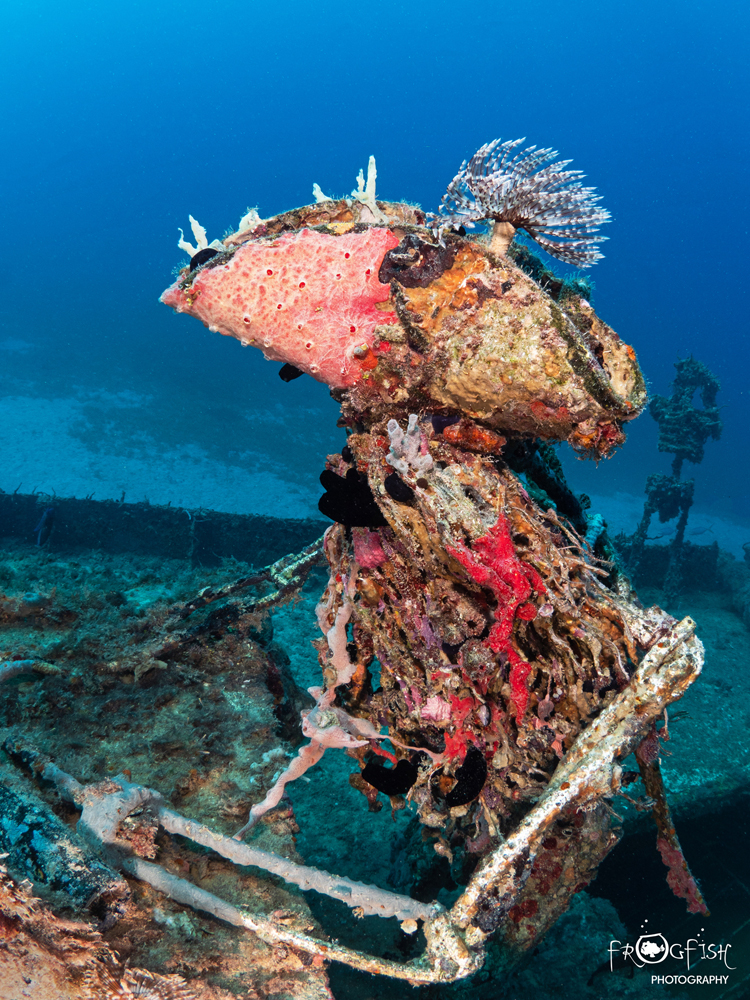
And there is a great deal of wonderful diving to tell you about. Our first day of diving did not offer the best visibility due to heavy rain earlier in the week. However, we were taken to a rugged dive site that had Caribbean and Lemon Sharks swimming all around us. If we had been able to see the usual 20m+ I am sure we would have been able to talk of dozens of sharks on the site.
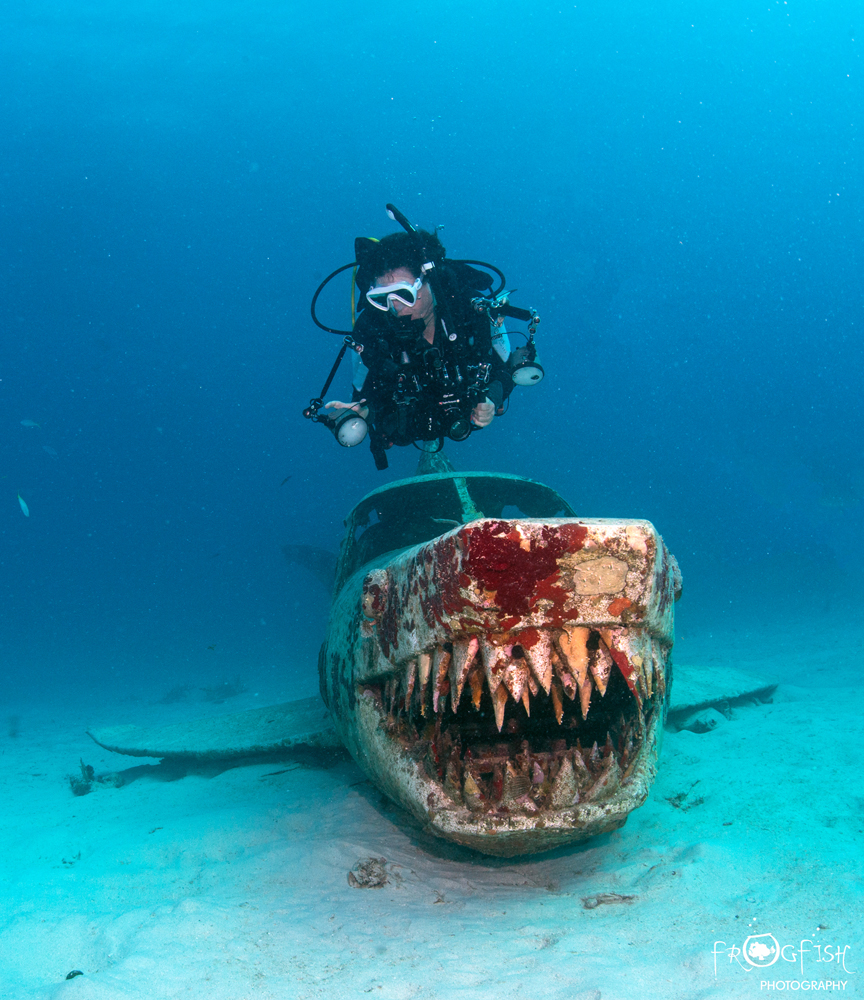
The BVI has plenty of artificial reefs, created from wrecks deliberately sunk. A couple of these are artistic creations from Beyond the Reef. The Willy T is a pirate themed party boat sunk in shallow water that now has skeletons of pirates duelling on the deck and going about their dastardly ways. It is a lot of fun and once you have had your fill, you can head up onto the shallow reef. Shark-plano is a series of three planes that were damaged in a hurricane, that have been turned into shark species and sunk. Both these sites are perfect for the diver that loves a bit of Instagram appeal!
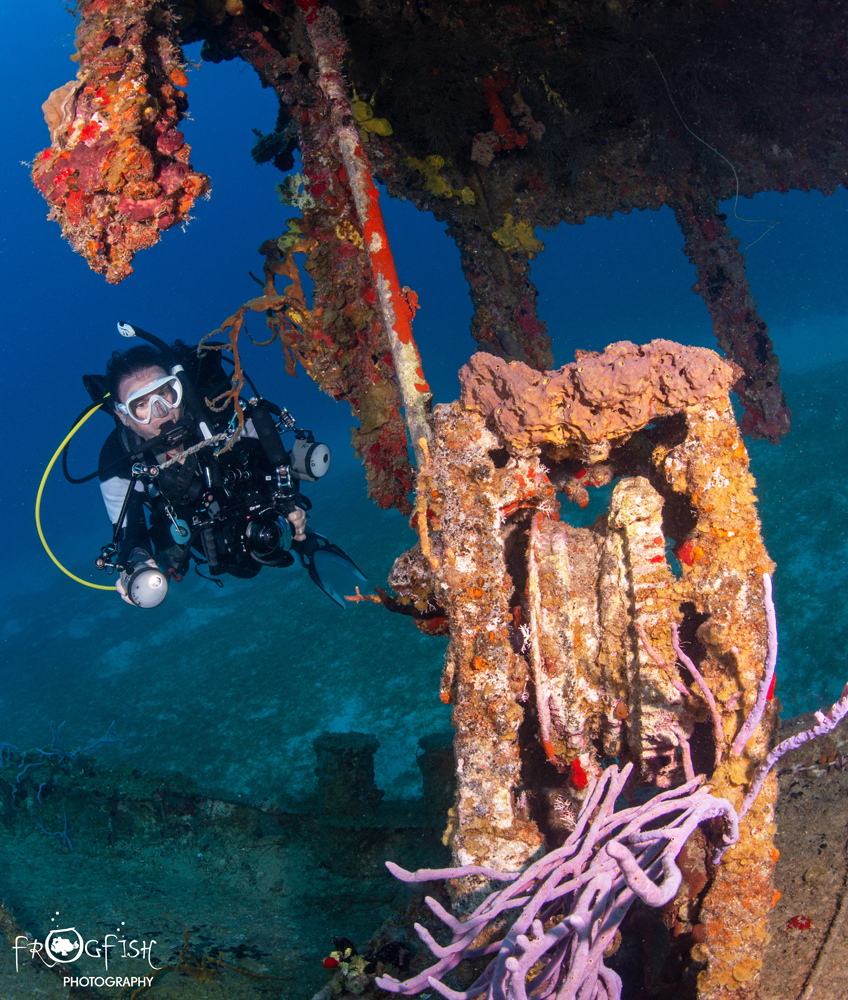
Wreck Alley has a series of three boats sunk to create a super dive site perfectly aligned for a single dive where you can explore them all. Moray eels can be seen free swimming along the decks, huge stingrays back the sandy seabed their home. Turtles cruise past as you make your way around and then up onto the reef for your safety stop.
On every dive we did we saw sharks which absolutely delighted us. The local dive shops seem to be particularly engaged in conserving the reefs, taking part in coral reef restoration, lionfish hunting, cleanups and logging their sightings. We were filled with positivity at the end of each day.
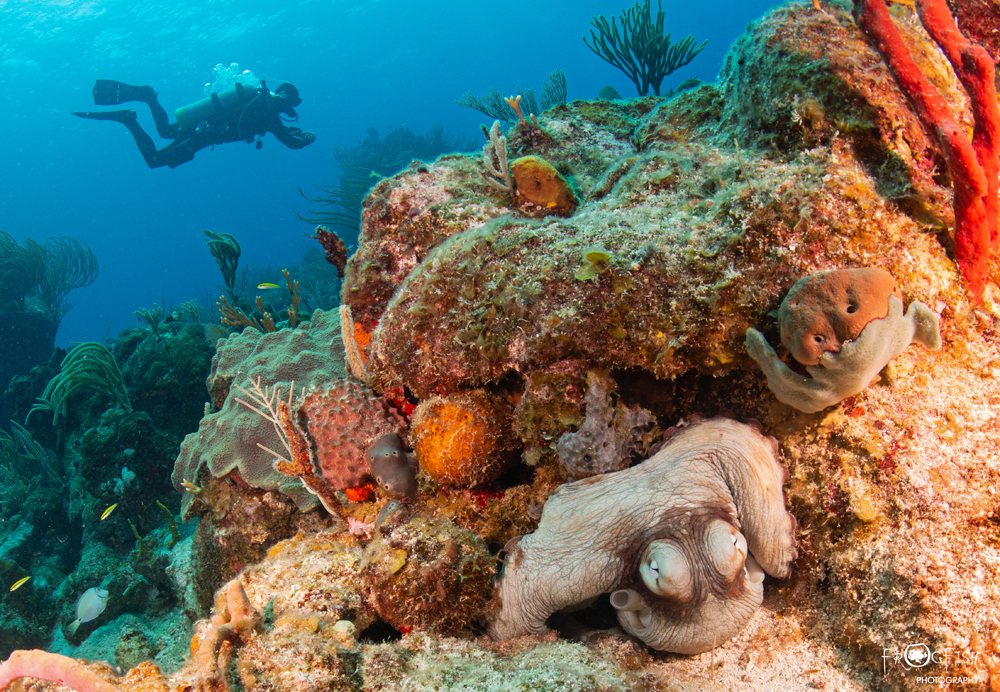
We hope that we can return to do it all again at BVI Wreck Week 2024!
Watch out for our full feature on BVI Wreck Week in the next issue of Dive Travel Adventures coming out in July.
For more information about BVI Wreck Week 2024 visit their website here.
Nick and Caroline were hosted by BVI Wreck Week
The Moorings provided their yacht for the week
Host Dive Centres:
Blogs
BVI Wreck Week – Diving the RMS Rhone (Part 2)
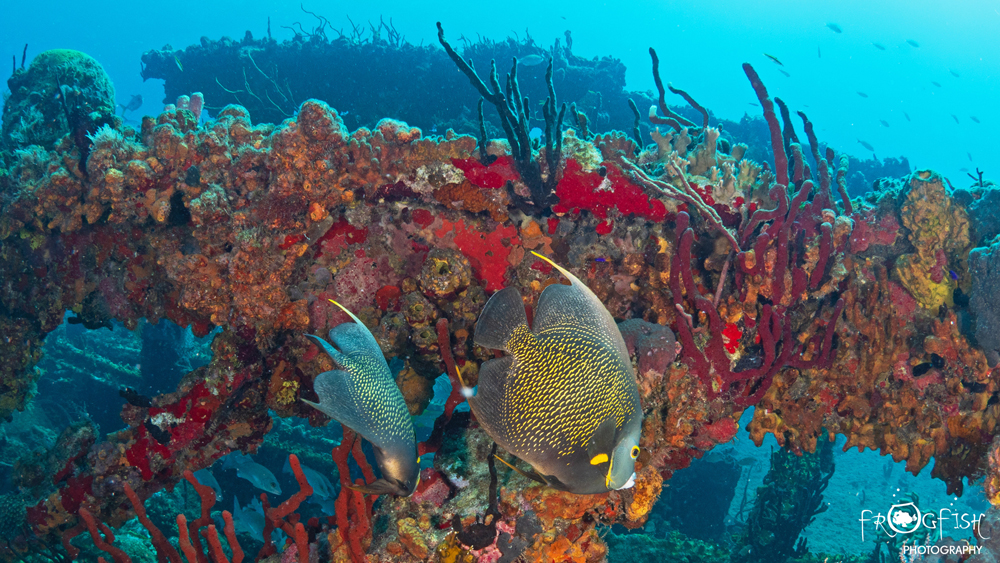
![]() You cannot talk about BVI Wreck Week, or diving in the British Virgin Islands, without spending some time on the jewel in their crown of wreck diving – the RMS Rhone. So this blog is going to be dedicated to a wreck dive that we were happy to dive three times on our trip and would have been happy to dive every day!
You cannot talk about BVI Wreck Week, or diving in the British Virgin Islands, without spending some time on the jewel in their crown of wreck diving – the RMS Rhone. So this blog is going to be dedicated to a wreck dive that we were happy to dive three times on our trip and would have been happy to dive every day!
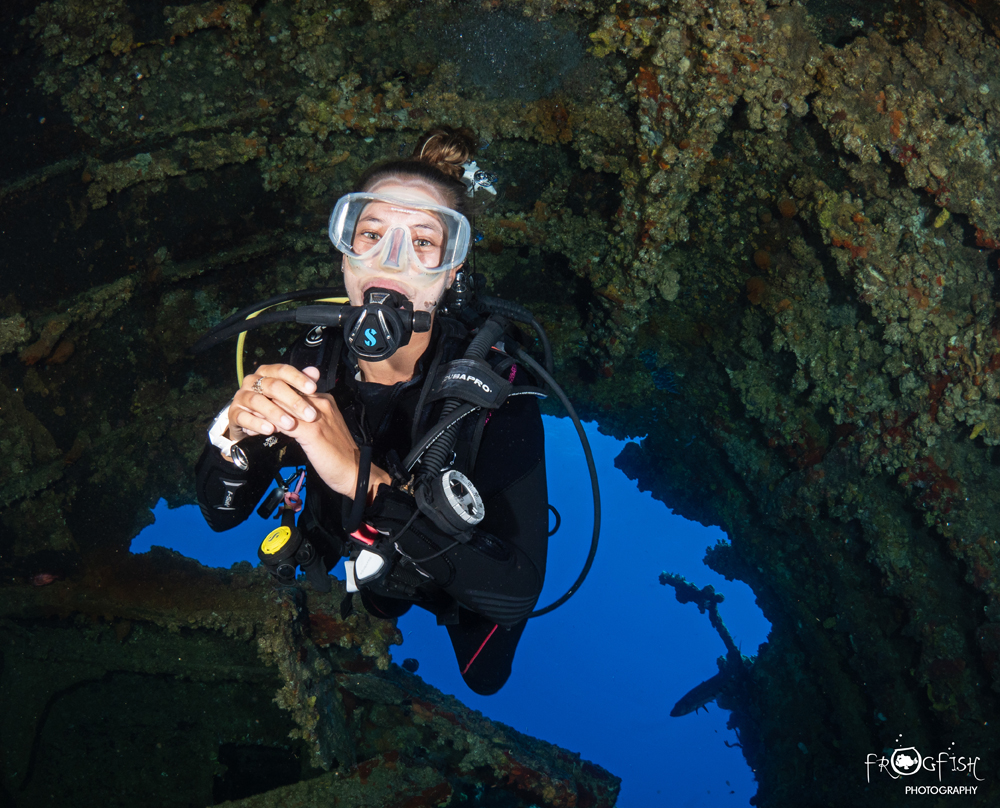
The RMS Rhone was a UK Royal Mail Ship wrecked off the coast of Salt Island on 29 October 1867 in a deadly hurricane. Now it is the most popular dive site in the region. The dive briefings for the site are filled with stories of the fate of the ship and some eye-opening tales since.
The wreck and surrounding area become the British Virgin Island’s first national marine park in 1980. Many of the underwater segments of the 1977 thriller The Deep were filmed on the Rhone, requiring actors Jacqueline Bisset, Nick Nolte and Robert Shaw to learn how to scuba dive.
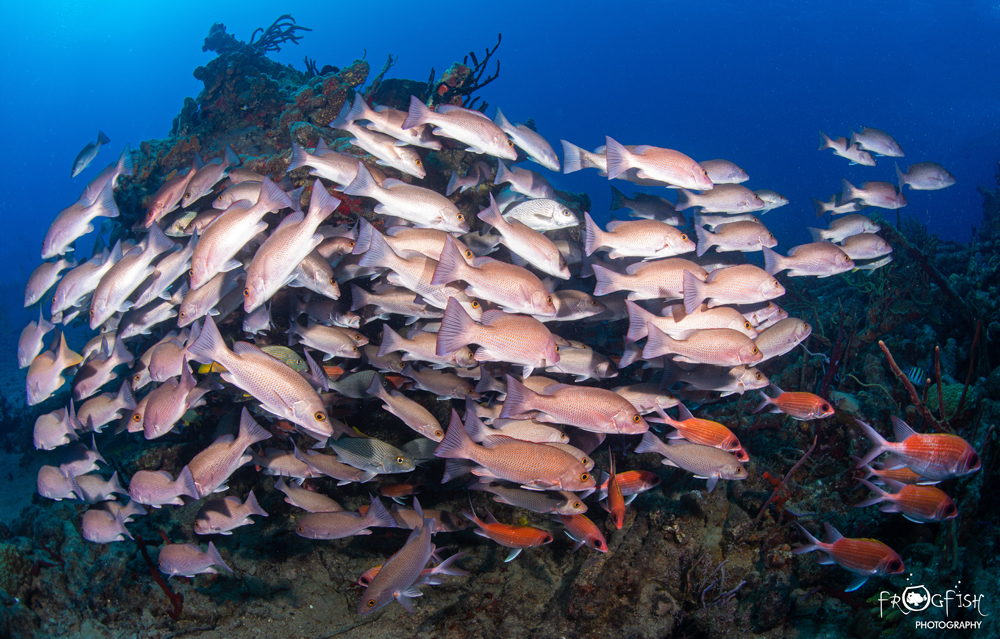
You’ll need at least two dives to fully experience the RMS Rhone. The ship split apart on sinking and the bow drifted just a little before sinking. The two halves are about 100 feet apart with the bow sitting in deeper water (around 25 meters / 80ft). So you are best to explore the bow fully on a single dive and then head to the stern on your second dive.

Whilst the history, artifacts and stories from the movies are absorbing, as soon as we got underwater to dive her, it was the incredible marine life that had us hooked. Two seahorses had made their home right at the bow of the wreck. Stingrays lay buried in the sandy sea bed. The structure is covered in colourful corals and sponges. Schools of fish occupy the overhangs and metal remains. We saw sharks on all three dives and were treated to a huge spotted eagle ray gliding over the wreck. Lobsters waved their antennae at us from every crevice. Life is everywhere you look on this dive.
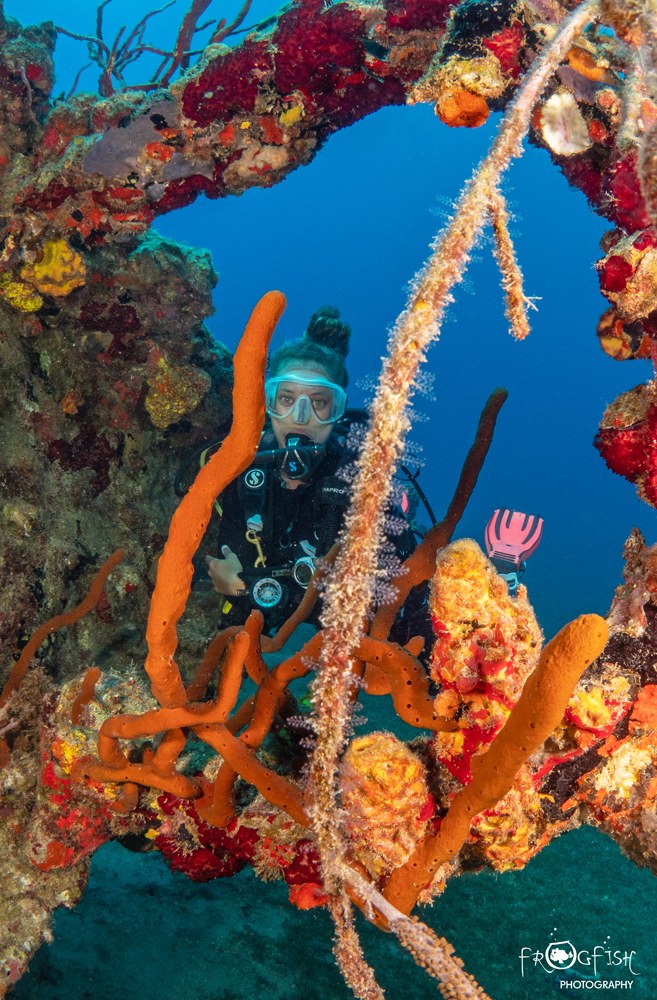
The marine park status has certainly ensured that this is one of the best wrecks we have dived in the Caribbean. Whilst we did not get the chance to do this – we bet it would make an awesome night dive.

Check out our next blog to find out more about the diving and watch out for our full feature in the next edition of Dive Travel Adventures Magazine in July!
For more information about BVI Wreck Week 2024 visit their website here.
Nick and Caroline were hosted by BVI Wreck Week
The Moorings provided their yacht for the week
Host Dive Centres:


